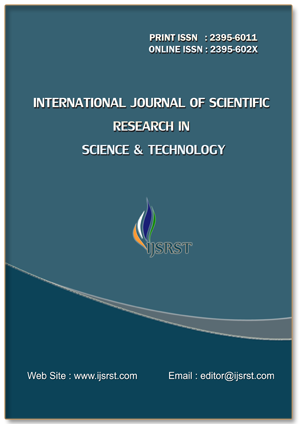Exoplanet Detection Using Machine Learning : A Comparative Study Using Kepler Mission Data
DOI:
https://doi.org/10.32628/IJSRST2411426Keywords:
Exoplanet Detection, Supervised Classification, Machine LearningAbstract
The search for habitable planets outside our solar system has captivated scientists throughout the centuries. Discovery and characterization of exoplanets have been one of the most important endeavors of modern astronomy. With various space missions, we have significantly expanded our observational capacity, resulting in an abundance of information about the universe. The influx of more data necessitates the development of techniques that can aid astronomers in processing all the information more efficiently and in an automated manner. Machine learning in recent years has become an indispensable paradigm to automate complex tasks that are possible only by humans. This work explores the application of machine learning to detect exoplanets from NASA’s Kepler mission. Our dataset comprises Kepler Objects of Interest (KOIs), encompassing their characteristic features and confirmed exoplanet status. We experiment with multiple supervised classification techniques including classical, tree-based, and neural methods. The best-performing model Histogram Gradient Boosting achieves a strong performance of 94.6% precision and 94.1% recall on a held-out dataset demonstrating the strong potential of integrating machine learning techniques into astronomy, potentially leading to new insights into planetary systems outside the solar system.
Downloads
References
Brennan, Pat (2019). “Why Do Scientists Search for Exoplanets? Here Are 7 Reasons”. NASA Website. Online. Retrieved from https://exoplanets.nasa.gov/news/1610/why-do- scientists-search-forexoplanets-here-are-7- reasons/.
Abhishek Malik, Benjamin P Moster, Christian Obermeier, Exoplanet detection using machine learning, Monthly Notices of the Royal Astronomical Society, Volume 513, Issue 4, July 2022, Pages 5505–5516, https://doi.org/10.1093/mnras/stab3692 DOI: https://doi.org/10.1093/mnras/stab3692
Sturrock, George Clayton; Manry, Brychan; and Rafiqi, Sohail (2019) "Machine Learning Pipeline for Exoplanet Classification," SMU Data Science Review: Vol. 2: No. 1, Article 9. Available at: https://scholar.smu.edu/datasciencereview/vol2/iss 1/9
Jin, Yucheng, Lanyi Yang, and Chia-En Chiang. "Identifying exoplanets with machine learning methods: a preliminary study." arXiv preprint arXiv:2204.00721 (2022). DOI: https://doi.org/10.5121/ijci.2022.110203
“Kepler/K2”. NASA Official Website. Online. Retrieved from https://astrobiology.nasa.gov/missions/kepler/.
“Exoplanet Archive”. NASA Official Website.Online. Retrieved from https://exoplanetarchive.ipac.caltech.edu/docs/dat a.html.
Harris, Charles R., K. Jarrod Millman, Stéfan J. Van Der Walt, Ralf Gommers, Pauli Virtanen, David Cournapeau, Eric Wieser et al. "Array programming with NumPy." Nature 585, no. 7825 (2020): 357-362. DOI: https://doi.org/10.1038/s41586-020-2649-2
Pedregosa, Fabian, Gaël Varoquaux, Alexandre Gramfort, Vincent Michel, Bertrand Thirion, Olivier Grisel, Mathieu Blondel et al. "Scikit-learn: Machine learning in Python." the Journal of machine Learning research 12 (2011): 2825-2830.
Vaswani, Ashish, Noam M. Shazeer, Niki Parmar, Jakob Uszkoreit, Llion Jones, Aidan N. Gomez, Lukasz Kaiser and Illia Polosukhin. “Attention is All you Need.” Neural Information Processing Systems (2017).
Downloads
Published
Issue
Section
License
Copyright (c) 2024 International Journal of Scientific Research in Science and Technology

This work is licensed under a Creative Commons Attribution 4.0 International License.
https://creativecommons.org/licenses/by/4.0





